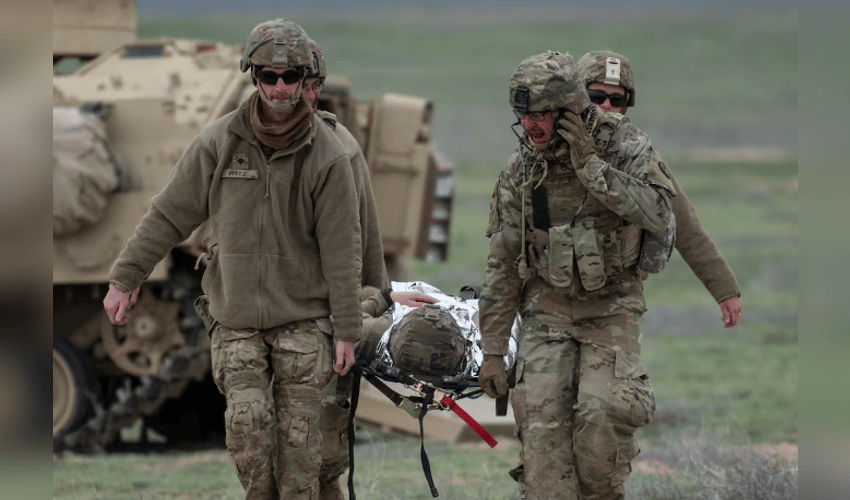Military
Experts warn that the military's medical system is not ready for future conflicts.
Published On Wed, 12 Mar 2025
Samar Thakur
2 Views

The U.S. military’s medical system is at risk of falling behind, leaving it unprepared for the high casualty rates expected in a future major conflict, experts warned senators on Tuesday. Retired Air Force trauma surgeon Dr. Jeremy W. Cannon emphasized that without urgent reforms, the Military Health System will continue to deteriorate, leading to preventable deaths on the battlefield.
Dr. Cannon, now a professor of surgery at the University of Pennsylvania and a surgeon at the Philadelphia Veterans Affairs Medical Center, warned that many wounded service members in future wars could survive their injuries, but due to inadequate medical readiness, one in four may not make it. A key issue is the lack of real-world experience among military general surgeons—only 10% handle enough complex cases to be considered combat-ready. This number has dropped from 17% in 2015 to 10% in 2019, according to Sen. Roger Wicker, chairman of the Senate Armed Services Committee. Cannon described this decline as the “peacetime effect,” explaining that military surgeons simply aren’t getting enough hands-on experience. “They’re not doing the cases, not performing the procedures they were trained for, because there aren’t enough patients in military hospitals,” he said.
He and other retired military medical leaders called for significant investment in Level 1 trauma centers at military hospitals to ensure surgeons receive the necessary experience. Retired Air Force Maj. Gen. Paul A. Friedrichs, former Joint Staff Surgeon, pointed out that military hospitals have become more like small community hospitals rather than trauma centers. He stressed the need for funding to partner with organizations like the American College of Surgeons to upgrade key facilities.
But funding has been a persistent issue. While nationwide healthcare costs have increased about 5.1% annually since 1938, military hospital budgets have actually declined by nearly 12% since 2015, Wicker noted. The military has also pushed many service members and their families toward private healthcare, reducing the number of patients in military hospitals and limiting opportunities for military doctors to maintain their skills.
Friedrichs emphasized that military medics need to treat critically ill patients regularly to maintain their expertise. He compared a surgeon treating a bladder cancer patient who needs their bladder removed to one handling a gunshot wound requiring bladder reconstruction—both require specialized skills that must be consistently practiced.
Another major issue is staffing. Retired Air Force Lt. Gen. Douglas J. Robb, former director of the Defense Health Agency, called for fully staffing military hospitals and expanding collaboration with the Department of Veterans Affairs (VA) and civilian hospitals. This would allow military surgeons to gain experience treating complex cases. Friedrichs supported this approach, citing his experience overseeing a joint DOD-VA medical center in Alaska, where combining resources led to more efficient care. He pointed out that instead of duplicating hospitals, military and VA facilities should integrate their operations to maximize patient care. Financially, the military and VA face major facility funding gaps—$10 billion in the DOD and $100 billion in the VA. Friedrichs suggested moving patients from VA hospitals to DOD facilities or deploying military medical personnel to VA hospitals to optimize resources.
Finally, Friedrichs stressed the importance of treating military medicine as a fully integrated part of the armed forces rather than an isolated system bogged down by bureaucratic inefficiencies. Dr. Cannon also pointed out a major leadership gap—no single entity within the Department of Defense is truly responsible for combat casualty care, making it difficult to drive meaningful reforms. He urged Congress to establish clear leadership in this area. Wicker concluded by emphasizing that military personnel must have confidence in their medical teams, as troops are more willing to take risks in combat when they know they’ll receive top-tier medical care if injured.
Disclaimer: This image is taken from MilitaryTimes.



